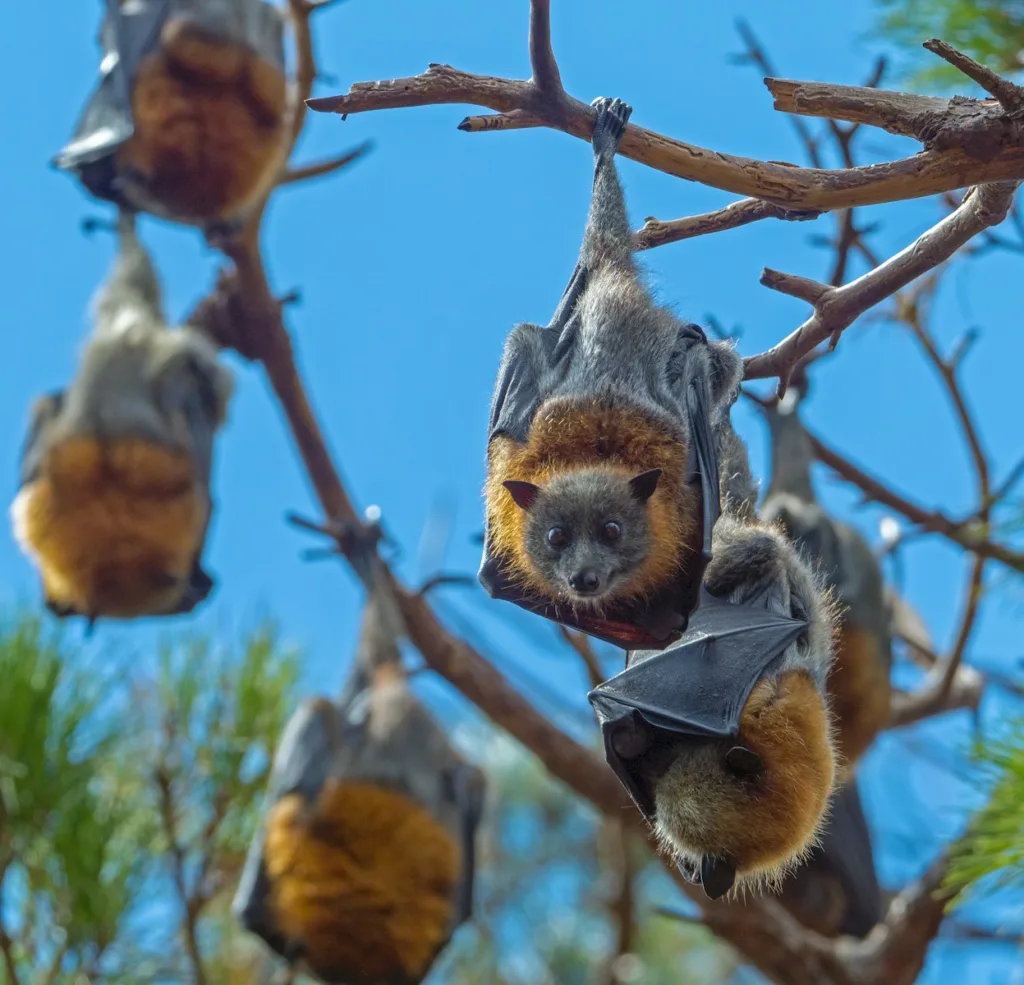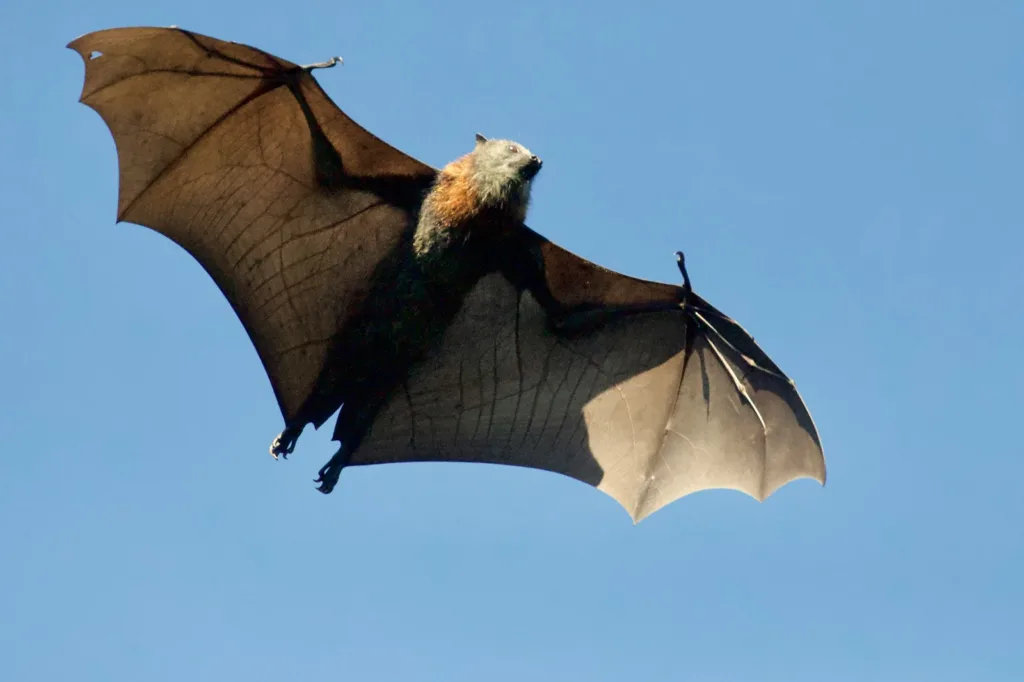Table of Contents
Bats are undergoing a rare evolutionary event
It has been discovered that, in a very uncommon instance of parallel evolution, bats grow larger in precisely the same ways in different places.
This is the first instance of parallel development in mammal species observed in real time, due to its extreme rarity. A research published in the journal Evolution states that it has only been observed in operation a very small number of times previously.
The results are based on a study of many bats, some of which were extremely small and others enormous, that were housed in the same wooded areas on the Pacific Ocean’s Solomon Islands.

While the smaller bats were believed to all belong to a separate species (Hipposideros diadema), two populations of larger bat were believed to be members of the same species, known as furious leaf-nosed bats or Hipposideros dinops.
“The bats have highly comparable DNA, despite their extreme differences in size. Researchers at the University of Melbourne Tyrone Lavery, a co-author of the report, said that “they use very different sonar frequencies, they probably eat different food, and even when they live in the same cave together they don’t interbreed.”
“That is why no one has ever really questioned whether they were different species.”
It appears that the larger bat are truly a different species from the smaller ones, having diverged in tandem over their evolutionary history.
Parallel evolution is the process through which two species—that is, ones that are not necessarily closely related—independently acquire characteristics in common. This typically occurs because these species experience comparable environmental stresses and selective pressures, which forces them to adopt comparable environmental adaptation strategies.
The development of comparable body forms and adaptations in aquatic species, such as dolphins and ichthyosaurs, despite their highly dissimilar evolutionary histories—one as mammals and the other as reptiles—is an illustration of parallel evolution.

Newsweek sent Lavery an email requesting more information.
“Our research suggests the rapid and repeated evolution of larger-bodied bats from smaller bats, each happening independently on separate islands,” Lavery stated.
“When we created family trees using the bats’ DNA, we found that what we thought was just one species of large bat in the Solomon Islands was actually a case where bigger bats had evolved from the smaller species multiple times across different islands.” bats are being selected for by something incredibly powerful, powerful enough to occur repeatedly on several islands. We speculate that these larger bats may be evolving to exploit food sources that the smaller bats aren’t consuming. They probably could interbreed, but for some reason they don’t.”
All of the islands’ larger bats use sonar at lower frequencies, suggesting that they are better adapted to hunting larger prey, like huge insects or even frogs.
“Over time, increased body size might have been a result of the physical and behavioral changes required to pursue larger prey. This could imply that the larger and smaller bat no longer regard each other as partners and lead different lives, according to Lavery.

In order to determine whether this identical process is taking place on other islands as well, the researchers intend to do more research.
Although evolution is often thought of as a relatively gradual process, it can occur quickly under the correct circumstances when two groups split apart and cease interbreeding. They may start to develop along distinct paths, according to Lavery.
Islands are renowned for their ability to provide real-time observation and understanding of the processes driving species evolution. Additionally, these are areas that are highly susceptible to the kinds of disturbances that people might cause. It’s critical that we take care of the Solomon Islands’ amazing landscapes before we lose these tales—or perhaps before we discover them.
you may also like :These 16 Extinct Species Are Still Extant On Earth
Bats Are Going Through a Rare Evolutionary Phenomenon (msn.com)
Parallel evolution is the process through which two species—that is, ones that are not necessarily closely related—independently acquire characteristics in common. This typically occurs because these species experience comparable environmental stresses and selective pressures, which forces them to adopt comparable environmental adaptation strategies.
Parallel evolution is the process through which two species—that is, ones that are not necessarily closely related—independently acquire characteristics in common. This typically occurs because these species experience comparable environmental stresses and selective pressures, which forces them to adopt comparable environmental adaptation strategies.
Parallel evolution is the process through which two species—that is, ones that are not necessarily closely related—independently acquire characteristics in common. This typically occurs because these species experience comparable environmental stresses and selective pressures, which forces them to adopt comparable environmental adaptation strategies.
Parallel evolution is the process through which two species—that is, ones that are not necessarily closely related—independently acquire characteristics in common. This typically occurs because these species experience comparable environmental stresses and selective pressures, which forces them to adopt comparable environmental adaptation strategies.
Parallel evolution is the process through which two species—that is, ones that are not necessarily closely related—independently acquire characteristics in common. This typically occurs because these species experience comparable environmental stresses and selective pressures, which forces them to adopt comparable environmental adaptation strategies.
Parallel evolution is the process through which two species—that is, ones that are not necessarily closely related—independently acquire characteristics in common. This typically occurs because these species experience comparable environmental stresses and selective pressures, which forces them to adopt comparable environmental adaptation strategies.
Parallel evolution is the process through which two species—that is, ones that are not necessarily closely related—independently acquire characteristics in common. This typically occurs because these species experience comparable environmental stresses and selective pressures, which forces them to adopt comparable environmental adaptation strategies.
Parallel evolution is the process through which two species—that is, ones that are not necessarily closely related—independently acquire characteristics in common. This typically occurs because these species experience comparable environmental stresses and selective pressures, which forces them to adopt comparable environmental adaptation strategies.
Parallel evolution is the process through which two species—that is, ones that are not necessarily closely related—independently acquire characteristics in common. This typically occurs because these species experience comparable environmental stresses and selective pressures, which forces them to adopt comparable environmental adaptation strategies.


1 thought on “Bats are undergoing a rare evolutionary event 2024”